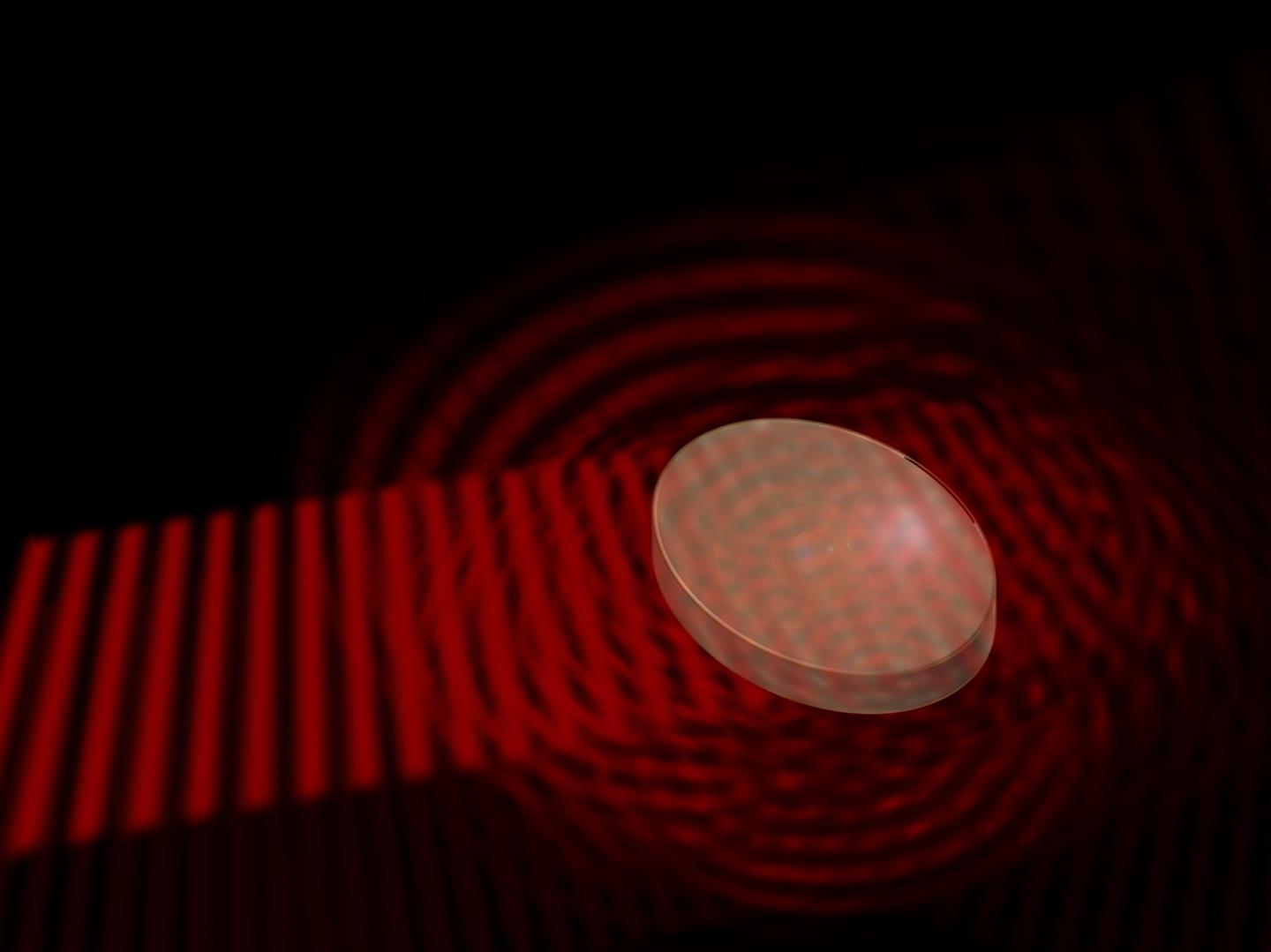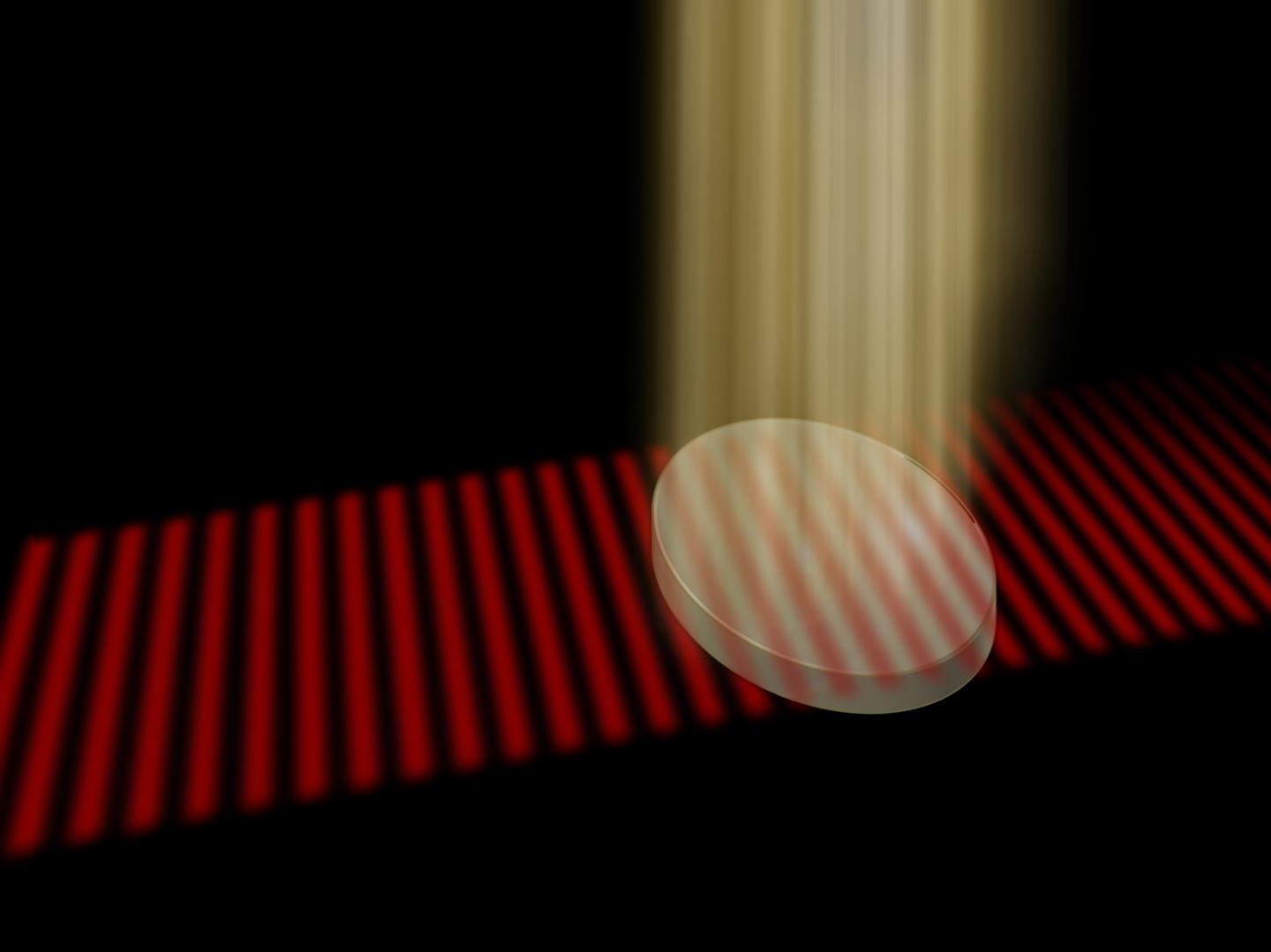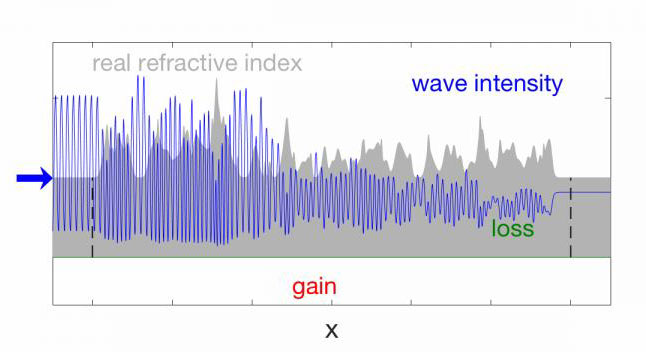
Cloaking Approach Prevents Light Scattering in Opaque Objects
VIENNA, Sept. 14, 2017 — In a novel approach to cloaking technology, researchers irradiated an opaque material from above, using a specific wave pattern that allowed light waves from the left to pass through the material without any obstruction. The researchers believe that this approach could be applied to different types of waves, including sound waves.

A material with random irregularities scatters an incident light wave into all directions. Courtesy of TU Wien.
Various techniques have been used to try to control the scattering of light in opaque objects, in order to create a ‘cloak of invisibility’ around the object. For example, special materials have been developed which are able to guide light waves around an object. Another cloaking approach has used objects that can emit light by themselves. When an electronic display sends out exactly the same light as it absorbs in the back, it can appear invisible, at least when looked at in the right angle.
Researchers at the Vienna University of Technology (TU Wien) chose a more fundamental approach.
“We did not want to reroute the light waves, nor did we want to restore them with additional displays. Our goal was to guide the original light wave through the object, as if the object was not there at all,” said researcher Andre Brandstötter. “This sounds strange, but with certain materials and using our special wave technology, it is indeed possible.”

When the material is irradiated with a specially designed pattern, the wave from the left can pass through the object completely unperturbed. Courtesy of TU Wien.
When wave scattering occurs in a disordered medium, the waves acquire a complex intensity pattern due to multi-path interference. The TU Wien team showed that these variations in intensity could be entirely suppressed by adding disorder-specific gain and loss components to the medium.
According to the team, the resulting constant-intensity (CI) waves in such non-Hermitian scattering landscapes were free of any backscattering and featured perfect transmission through the disorder.
“The crucial point is to pump energy into the material in a spatially tailored way such that light is amplified in exactly the right places, while allowing for absorption at other parts of the material,” said professor Konstantinos Makris from the University of Crete (previously from TU Wien). “To achieve this, a beam with exactly the right pattern has to be projected onto the material from above — like from a standard video projector, except with much higher resolution.”
If this pattern perfectly corresponds to the inner irregularities of the material which usually scatter the light, then the projection from above can effectively switch off the scattering, and another beam of light traveling through the material from one side can pass without any obstruction, scattering or loss.

A wave impinges from the left (blue) onto a disordered medium (grey). A part of the wave transmits to the right, the rest is reflected back to the left. By adding gain (red) and loss (green) with a tailored spatial profile the wave gets perfectly transmitted and loses all of its interference fringes. The animation shows the crossover to this new phenomenon for increasing values of gain and loss. Courtesy of TU Wien.
“Mathematically, it is not immediately obvious that it is at all possible to find such a pattern,” said professor Stefan Rotter. “Every object we want to make transparent has to be irradiated with its own specific pattern — depending on the microscopic details of the scattering process inside. The method we developed now allows us to calculate the right pattern for any arbitrary scattering medium.”
Computer simulations have shown that the method works. The researchers now plan to demonstrate these unique wave states experimentally, using spatially modulated pump beams that can flexibly control the gain and loss components in an active medium.
“. . . As a first step, we may test this technology with sound instead of light waves. Experimentally, they are easier to handle, and from a mathematical point of view, the difference does not matter significantly,” said Rotter.
The technology could open possibilities for active camouflage.
The research was published in Light: Science & Applications (doi:10.1038/lsa.2017.35).
Published: September 2017